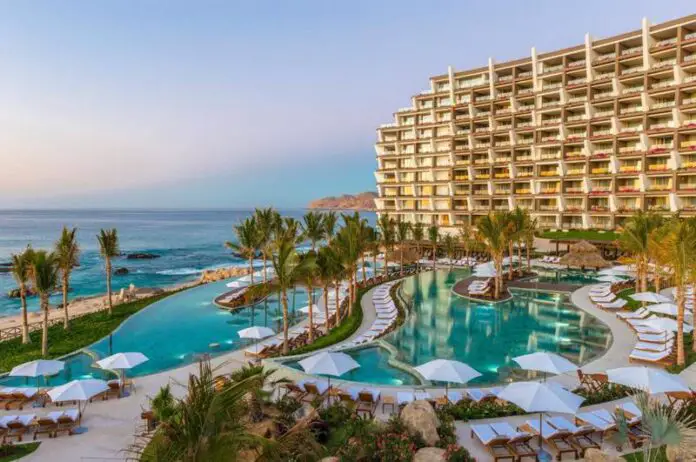They will focus on high purchasing power tourism, mainly from the United States and Canada.
Los Cabos, Baja California Sur, charts its growth path with a strategy focused on the expansion of luxury experiences to consolidate itself as a high-tourism destination. With the addition of 2,100 hotel rooms, mostly of a boutique or residential concept, the destination aims to reach a total of 21,000 rooms in the next two years.
This ambitious plan is aimed at segments with high purchasing power, especially American and Canadian visitors.
“There are high-end, hyper-luxury developments taking place in that area of Los Cabos, Punta del Este, we are achieving what was planned for the destination, that the hotel offer was widely distributed,” said Mauricio Salicrup, president of the Council of the Los Cabos Hotel Association.
The arrival of new hyper-luxury developments, such as Park Hyatt, Grand Velas Boutique, St. Regis, and Amman, soon to open, catapulted this tourist hub to become a destination with the highest average lodging rates in the country: in the Corridor area, one night on average costs $464 in a month like July, while the average rate for the destination amounts to $394 per night.
Added to this is the opening of the second Four Seasons and the announcement of a new hotel under the Grand Hyatt brand in the Pacific.
“Growth must occur little by little, we are not looking for a thousand more rooms in a year; Our bet is on value not on number, we have to take care of the infrastructure in roads, water, electricity,” explained Rodrigo Esponda, general director of the Los Cabos Tourism Trust (Fiturca).
However, this growth is not without challenges, from managing the employment deficit to the need to address infrastructure issues such as water supply and increasing traffic congestion.
With the growth of hotel infrastructure, problems have been accentuated that not only affect tourists, but also residents of the area, who have seen how travel time increases due to the increase in cars in circulation.
Furthermore, another problem is the water supply which, according to Salicrup, is a problem that is being addressed.
“There is a vehicular load that is more noticeable, they are still easy transfers but they involve more time, but there is a plan for the infrastructure to grow, everyone is focused on the growth of the destination being gradual,” said Esponda.
They register a deficit of 3 thousand workers and water problems, the challenges
The growth of Los Cabos has brought a problem for hotels and the entire chain of service providers in the destination, since jobs are not easily filled and, currently, the tourist center has a deficit of workers of around 3 thousand, revealed the executive president of the Los Cabos Hotel Association (AHLC), Lilzi Orcí.
“We are eager for them to come to work,” says the president of the AHLC, who sees the turnover of personnel, who find better opportunities in high-end hotels, as one of the reasons why this number of vacancies are neglected.
Although job offers are promoted among residents of Los Cabos, the inhabitants who live in that area are already busy in some job related to tourism activity, so hotels must recruit in other states of the country.
Orcí details that occupancy during October reached 64 percent, with a drop of between 1 and 2 percentage points due to new developments that increased the hotel supply; However, the flow of travelers has remained stable.
“The flow has been exceeding what we had had each month, it fell short due to new openings and non-traditional accommodation. For the next two months, it is the high season, we are above 90 percent in the New Year,” she details.
Short-stay rentals in Los Cabos have captured an equally high luxury segment and even the average rates of services acquired by platforms had, in July, a higher average rate than that of hotels in the same segment, with a price per night of 575 dollars.
According to the destination’s Tourism Observatory, the accommodation offer through online platforms is 9,080 units, an increase of 37.2 percent compared to July of last year, in addition to its occupancy rate of 59 percent, a smaller amount compared to traditional hotels, but it is compensated by the higher rate.
“The platform rental service has to be regulated, it is not the level of Cancun or Mexico City, the houses that are rented here are luxury, but we must come to a regulation,” Salicrup requested.
By 2024, promotional efforts will boost Los Cabos’ leadership as a leading destination by expanding its hotel offering with the opening of seven new properties and an increase in the number of airline seats, in an effort to attract a greater number of visitors, and provide certainty to the industry.
Source: El Financiero







